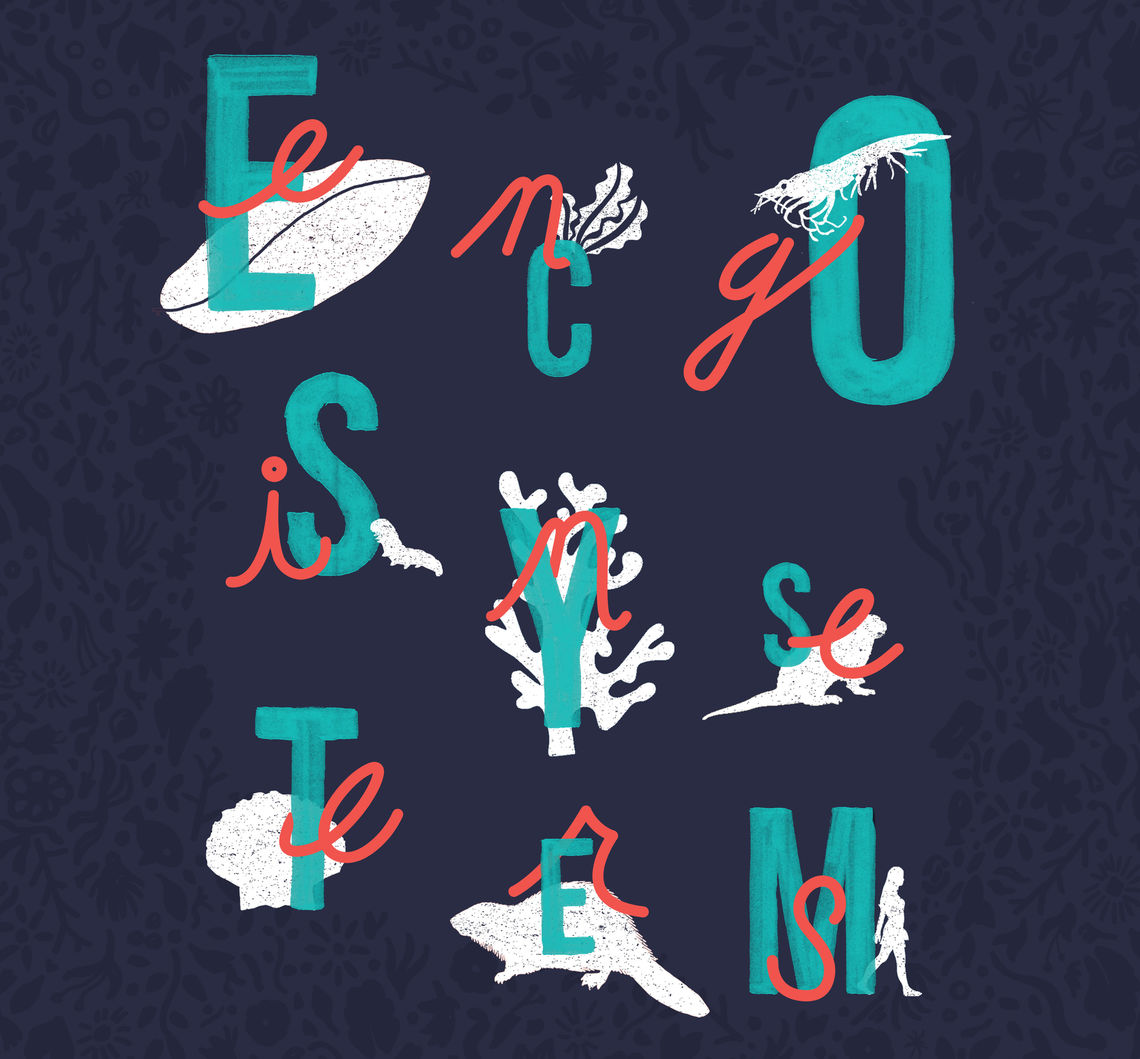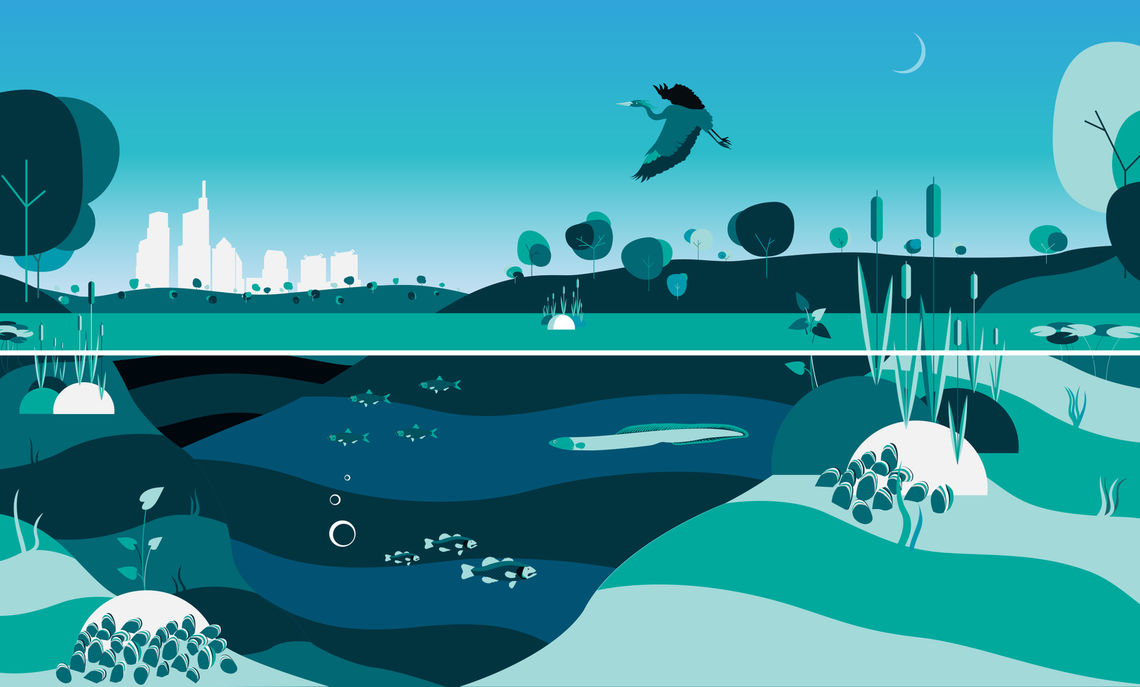ecosystem engineers art

Humans are not the only ones who rebuild and restore the built environment. Freshwater mussels and other organisms may provide more impact than we know.
Science has long recognized organisms to have critical influence on physical and chemical processes occurring in the environment. While some impact invariably arises from organismal energy, material uptake, and waste production, many entities alter physical structure and change chemical reactivity in ways that are important for the habitat. These species are what we consider ecosystem engineers.
Ecosystem Engineers Are Crucial
Now, let’s get granular here. You may be thinking, “Aren’t most, if not all organisms, considered ecosystem engineers? Can’t most organisms modify themselves or their environment?” You are not wrong by that notion. The overall term “ecosystem engineer” itself can be considered problematic. Many organisms can impact their environment in some shape or form, however, this category helps us distinguish organisms with the strongest impact on their environment without the effect of competition, predation, or other biological pathways. Ecosystem engineers are crucial to the environment because they contribute species richness and heterogeneity of the landscape of an area. Without them, our ecosystem can become unbalanced and unhealthy.
Ecosystem engineers can be split into two categories: allogenic and autogenic. Allogenic engineers are defined as species that modify the environment by mechanically changing living or nonliving materials to form another. Examples include beavers creating dams that alter water flow, or woodpeckers drilling holes within trees to make habitats. Autogenic engineers are species who change themselves to serve the environment. These organisms are a bit harder to find due to them slowly adapting over a period of time. Trees are a common example because as they grow, other organisms use the trunk, branches, and leaves as habitats.
Our Watershed: Freshwater Mussels

A Closer Look
An allogenic organism, like freshwater mussels, can shape their environment. Freshwater mussels are bivalve mollusks similar to clams and oysters. They can be found in local streams and rivers and have a symbiotic relationships with other animals and plant species. Freshwater mussels are able to sift out microscopic particles to help clarify the water, strengthen stream beds by keeping soil in place, and provide food and habitat needed by other organisms. By removing particles from the water, freshwater mussels help light travel deeper into the water, allowing plants to grow. According to the Partnership for the Delaware Estuary, “one mussel bed studied in Southeast Pennsylvania was found to remove 26 metric tons of solids from the water in a single summer season—as much as five grown elephants.”
“We are all connected to the water that surrounds us. Freshwater mussels are a shining light of hope in the beds of our rivers.” -Habitheque Inc.
Restoring the Shoreline
Aquatic organisms are at a particularly high risk due to man-made structures that greatly change the flow of rivers – as well as chemicals, excess fertilizers, and other pollution – that ultimately drains into streams and rivers. Unfortunately, mussels are the most in peril of all plants and animals in North America. For example, in the greater Philadelphia area, 12 freshwater mussel species call the Delaware River home, and each species is in serious decline. This has a chain reaction in the quality of rivers. The loss of species diversity and an increase in pollution threatens many organisms. In order to stabilize the area where land and water meet in the Delaware River, the organizations Habitheque, Inc. and Fairmount Water Works are on a mission to fortify the riverbed. By utilizing bio-logs and aquatic vegetation, this will help strengthen the riverbed. The process includes adding shoreline plants, trees, and flowers to help filter water, store toxins and carbon, as well as provide shelter and food for many insects and animals. This will attract more species to the area, making a richer ecosystem.
The Freshwater Mussel Hatchery Exhibition, now open at the Fairmount Water Works in Philadelphia, give streams and rivers another chance at being habitable and successful, and can serve as a model for others. The exhibit was made possible thanks to Habitheque and the Partnership for the Delaware Estuary (PDE). In 2007, PDE launched the Freshwater Mussel Recovery Program, which aims to conserve and restore native freshwater mussels in the Delaware Estuary. Similar programs and conservation methods like this are happening at a national level. To learn more about freshwater mussel conservation, please visit www.delawareestuary.org
ecosystemwebgraphic
